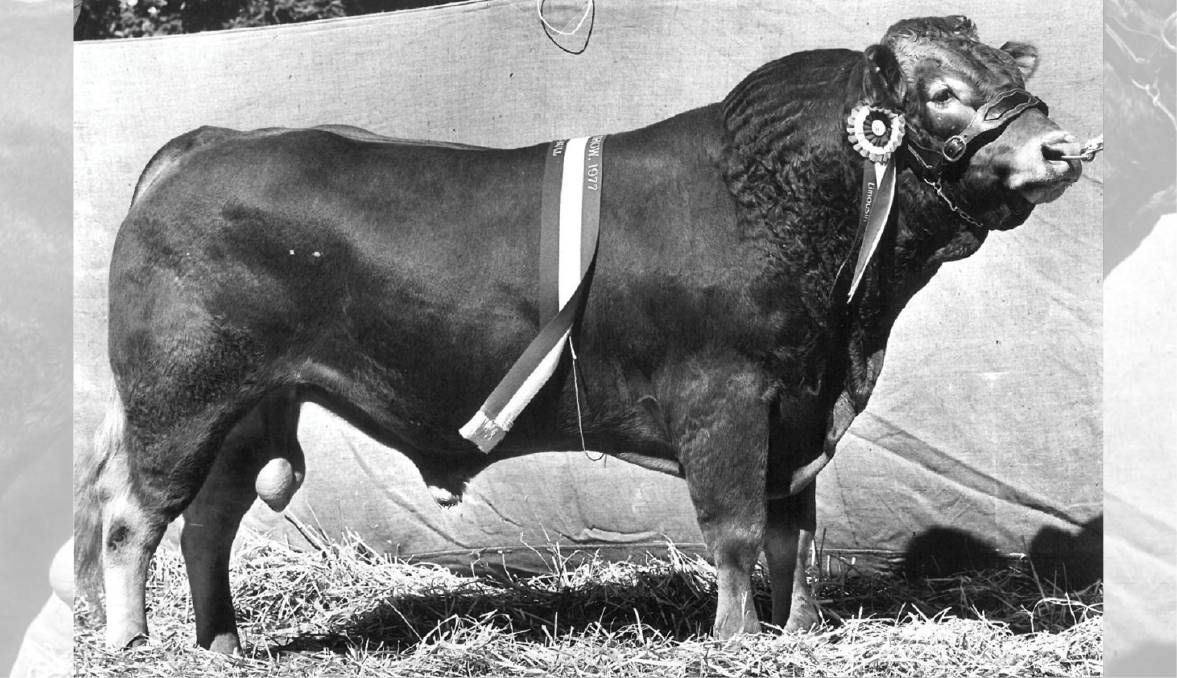Latest News
An article written by The Land marking the 50 year celebration of the Limousin Breed.

The Australian Limousin Breeders' Society celebrated in style last month when it held its annual National Show and Sale at Holbrook, NSW, and marked 50 years of the breed in Australia and New Zealand at the Sydney Royal Easter Show.
Australian Limousin Breeders' Society president, Chris Meade, said one of the highlights of the celebrations was the 50th Anniversary dinner which showcased all that the breed had achieved during the past half a century.
At the dinner, former Australian Limousin Breeders' Society CEO, Alex McDonald, spoke of the challenges and advancements of the past 50 years, as well as presenting life memberships to stalwarts of the breed in Carolyn and the late Bill Tooth, of Longreach Limousin stud, Annette and the late Michael Tynan, Birubi stud, and John and Bev McIntyre, Chateau stud.
While it was a special time to reflect on the origins and development of the breed, Mr Meade said Limousin was very well positioned in the beef industry for the future social responsibility in terms of producing beef.
"While the jury is still out, it does appear that because of their feed conversion etc that Limousin are lower producers of greenhouse gases (methane), which is a very strong and positive trait," he said.
"The Irish are doing some testing on this, and they are finding in the UK and Ireland that Limousin well and truly has an edge. It appears that Limousin are right in the picture and well positioned as we go forward for the next 50 to 70 years in trying to reduce greenhouse gases."
Mr Meade said going forward, there would also be further recognition of the benefits of the F94L gene, which was found in higher frequencies in Limousin than other cattle breeds.
"The F94L gene increases the volume of fibres, and the fibre is finer, creating more beef with more tenderness, and no adverse affect on birth weight, calving ease, fertility or longevity," he said.
"Researcher, Dr Wayne Pitchford, Adelaide University, who was a guest speaker at our AGM earlier this week, discovered that the gene increases the weight of prime cuts by 19pc and overall beef yield by 7pc.
"Along with an increase in yield, meat quality is also better with reduced fat and higher rates of tenderness.
"Our society is continuing to work on the benefits of the F94L gene, both in creating a more efficient animal, and in the reduction in methane.
"You don't have to have a purebred Limousin to get all the benefits either, so in using Limousin over so many other breeds you are getting the hybrid vigour and everything you are crossing it with is getting some benefits out of the F94L gene, including the feed efficiency.
"All other breeds benefit with a dose of Limousin in them."
Mr Meade said Limousin had come a long way, and was a leading beef breed in Australia.
"What was delivered into Australia 50 years ago, was one type of animal being a French Pure apricot horned animal, with a questionable temperament, " he said.
Fast forward 50 years and Mr Meade believes today Limousin cattle are considered to have one of the best temperaments of all the Australian beef breeds.
"We also now have a high level of polledness throughout the herd. Of calves registered in 2022, we had 94 per cent polled, and we have three colours now in apricot, red and black," Mr Meade said.
"What is also understated in the Limousin breed is its ability to be varied in type.
"Australians and New Zealanders have also done it with horses and dogs that have come into their country years ago, and with Limousin they have also adapted the breed to suit the conditions.
"There's more softness in the animals now; the typical adaptation that Australian breeders do in this part of the world to suit the environment is sensational."
Mr Meade said Limousins came from mountainous country in France, and were also housed inside in winter, but of course, that doesn't happen in Australia.
"They also have better mobility and structure now, to make sure they are capable of walking the long distances required of them on the various Australian and New Zealand properties which I think is another strong element," he said.
"One of their key strengths is in the conversion of feed into beef, not into fat. They are a highly efficient feed conversion animal which is a very critical factor."
Mr Meade said Limousin grazed differently to other beef breeds, and stood up very well to different quality of feed.
"They are browsers instead of grazers and they don't hog themselves, but rather chew and walk," he said.
"As a result it is a rarity that a Limousin will ever get bloat because of their more controlled feeding habit.
"It is good to remember that Limousin are one of the beef breeds that were beasts of burden going back in history.
"They were dual purpose in that they pulled drays and they fattened differently as well."
Renowned as the carcase breed, Limousin remains among the highest yielding animals, according to Mr Meade.
"Typically beef breeds will yield 55pc and Limousin are usually 65pc, which is a huge difference," he said.
"It was pleasing to see that Limousins once again stood out in the carcase competition at the Sydney Royal and continually proved the point of their feed efficiency and carcase yield."
This is branded content for Australian Limousin Breeders' Society Ltd

